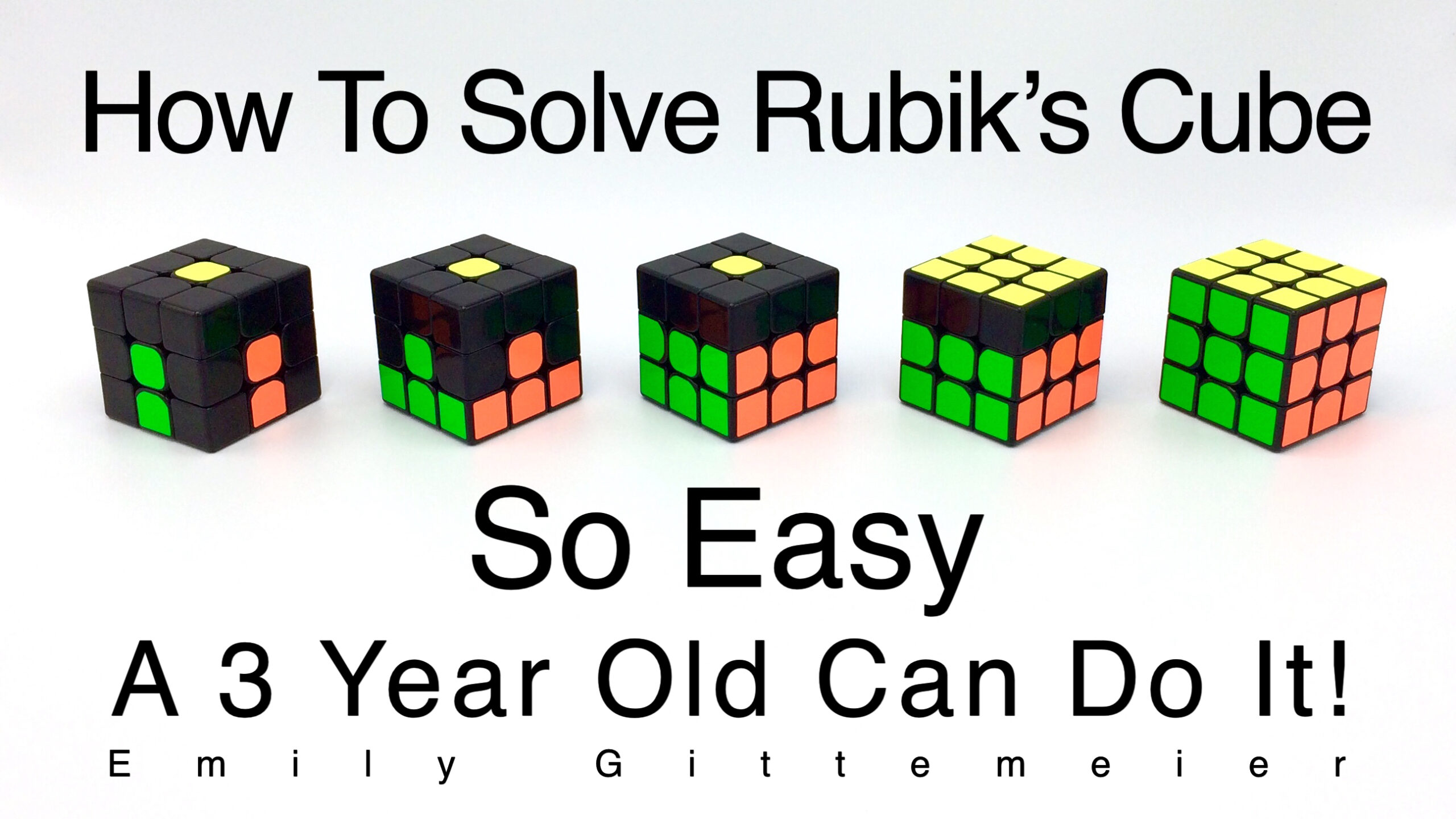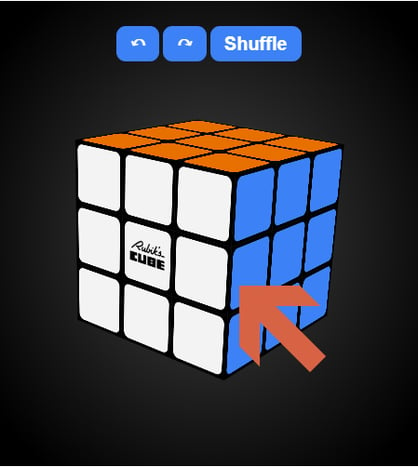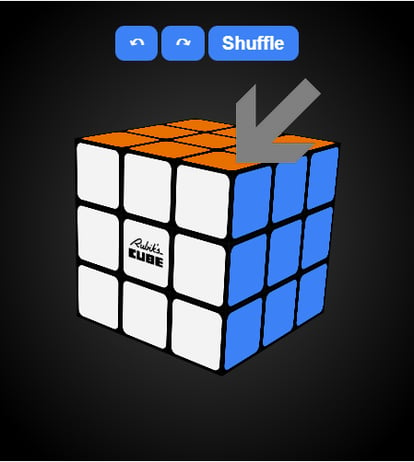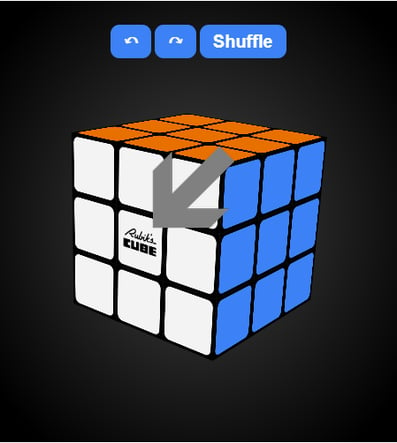How to Solve a Rubiks Cube Easily – There are many approaches on how to solve the Rubik’s Cube. All these methods have different levels of difficulties, for speedcubers or beginners, even for solving the cube blindfolded. People usually get stuck solving the cube after completing the first face, after that they need some help. In the following article I’m going to show you the easiest way to solve the cube using the beginner’s method.
The method presented here divides the cube into layers and you can solve each layer applying a given algorithm not messing up the pieces already in place.
Table of Contents
How to Solve a Rubik’s Cube: Important Vocab to Know
When it comes to how to solve a Rubik’s cube, it might look like following a series of simple steps. In reality, though, it’s quite complex.
Before you even start trying to follow the numerous strategies for solving, get familiar with the vocabulary. This will make it easier to follow the confusing Rubik’s cube algorithms and permutations you must use to solve it!
Edge
An edge piece on a Rubik’s cube is the part where two visible colors meet. There are 12 edges in total.
Corner
As expected, a corner piece is located in the corner of each side of the cube. They have three visible colors, and there are eight corners in total.
Center
Center cubes are located in the center of each side and have one visible color. There are six in total, and, unlike the rest of the cubes, they do not move position. Because they are fixed, the color of the center cube is used to represent each side of the Rubik’s cube.
Layer
The part of a cube you turn, consisting of nine blocks. No matter which way you hold the cube, there are three layers.
Faces
Like all cubes, the Rubik’s cube has six sides, or faces. When executing Rubik’s cube algorithms with the beginner’s method, it’s assumed you’re looking at the cube with the white face up, meaning the Rubik’s cube logo should be on top.
With this in mind, Rubik’s cube notation works as follows:
| Face | Notation |
| Left Face | L |
| Right Face | R |
| Up Face | U |
| Down Face (bottom of cube) | D |
| Front Face (facing you) | F |
| Back Face (facing away from you) | B |
| Middle Face (center “slice”) | M |
| Entire Cube | Y |
Regular/Inverted Turn
There are two ways to turn a layer: regular and inverted. A regular turn is a clockwise turn, and an inverted turn is a counterclockwise turn.
In Rubik’s cube notation, an inverted turn is represented with a lowercase i, such as Ri. This would mean that you rotate the right side counterclockwise.
Algorithm
A Rubik’s cube algorithm is an operation, or a series of rotations, that reorients the blocks into a desired outcome. They are usually written with a capital letter denoting the face that should be rotated, a lowercase i if that rotation should be counterclockwise, and a number 2 if it should be rotated twice.
Permutation
Permutation refers to the act of moving the blocks into the desired formation, or the arrangement of the pieces.
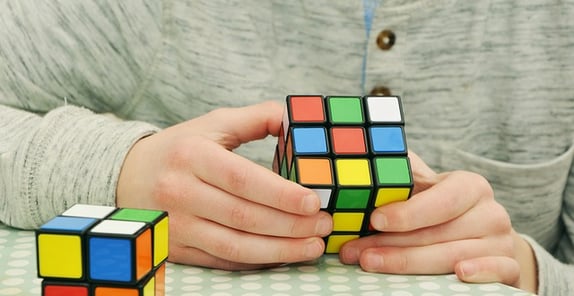
How to Solve a Rubik’s Cube: 7-Step Guide
The beginner’s method for solving a Rubik’s cube is still fairly difficult, so take lots of breaks and don’t be afraid to use a solving tool if you’re really struggling with a certain section. The more you practice, the better you’ll get. Don’t give up!
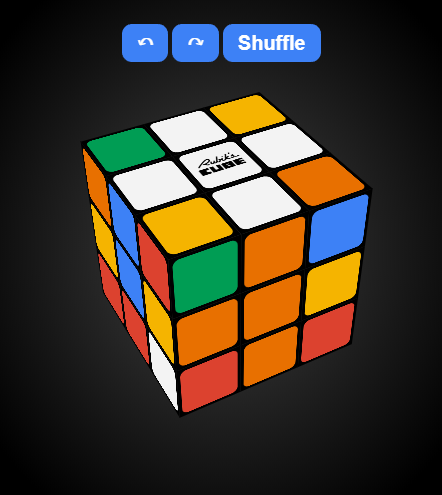 Note the two cubes of the same color beneath each arm of the white cross. (Ruwix.com)
Note the two cubes of the same color beneath each arm of the white cross. (Ruwix.com)
Step 1: Create White Cross
Begin by holding the cube with the white face up. You probably won’t start with the white face finished, so remember that a face’s color is determined by the center cube. That means that the face with the white center cube should be facing up.
The first step to the beginner’s method is to create a cross on the white face. There’s no strict algorithm to perform here, as there are so many potential permutations of the cube. Instead, focus on creating the white cross using intuitive movements.
When you’ve created the white cross, there should be two blocks of the same color aligned on each face directly below the white block on the top face. If that isn’t the case, keep working with the cube until those pieces are properly aligned, or the next step will be much more difficult.
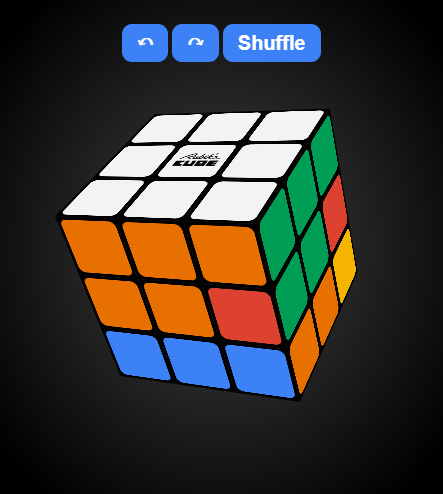 Note the top layer’s three cubes being the same color as the center cube. (Ruwix.com)
Note the top layer’s three cubes being the same color as the center cube. (Ruwix.com)
Step 2: Solve White Corners
Now that the white cross is in place, it’s time to finish this face by solving the white corners. Use the white cross foundation to organize your side color. By the time you finish this step, you should have three cubes of the same color in the top layer and one cube in the center of the middle layer of the left, right, back, and front faces.
To solve this step, you’ll need to run through some algorithms, or rotation patterns that result in a specific cube placement.
Rotate the bottom layer until a white edge piece is positioned below an empty spot on the top face. Find the direction of the white piece you want to align below and then run through the algorithm until the white cube is in place. If you’re not quite ready for memorizing Rubik’s cube algorithms, run through the simple algorithm below instead.
If you find that your center pieces have migrated, you’ll need to get your white cross set up again. If you run through these algorithms properly, the center pieces should end up back where they began.
Simple Algorithm
| Algorithm | Explanation |
| Ri Di R D | Rotate the right face counterclockwise.Rotate the down face counterclockwise.Rotate the right face clockwise.Rotate the down face clockwise. |
If your white cube faces down after you’ve run through this algorithm, run through it three more times. If your white cube faces left after running through the algorithm, repeat it five times.
A white sticker facing right. (Ruwix.com)
If Your White Sticker Faces Right
| Algorithm | Explanation |
| Ri Di R | Rotate the right face counterclockwise.Rotate the down face counterclockwise.Rotate the right face clockwise. |
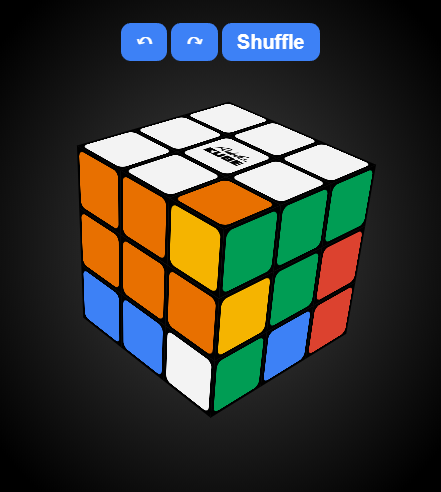 A white sticker facing left. (Ruwix.com)
A white sticker facing left. (Ruwix.com)
If Your White Sticker Faces Left
| Algorithm | Explanation |
| F D Fi | Rotate the front face clockwise.Rotate the down face clockwise.Rotate the front face counterclockwise. |
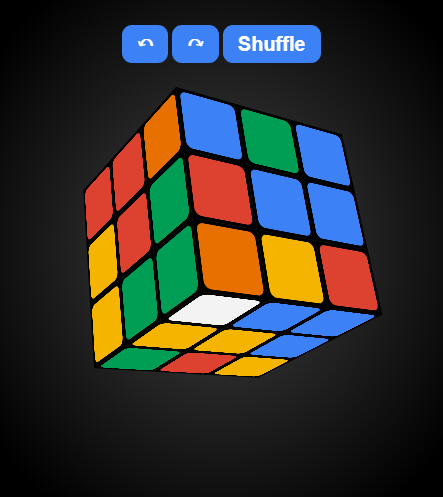 A white sticker on the bottom. (Ruwix.com)
A white sticker on the bottom. (Ruwix.com)
If Your White Cube Is on the Bottom
| Algorithm | Explanation |
| Ri D2 R D Ri Di R | Rotate the right face counterclockwise.Rotate the down face clockwise two times.Rotate the right face clockwise.Rotate the down face clockwise.Rotate the right face counterclockwise.Rotate the down face counterclockwise.Rotate the right face clockwise. |
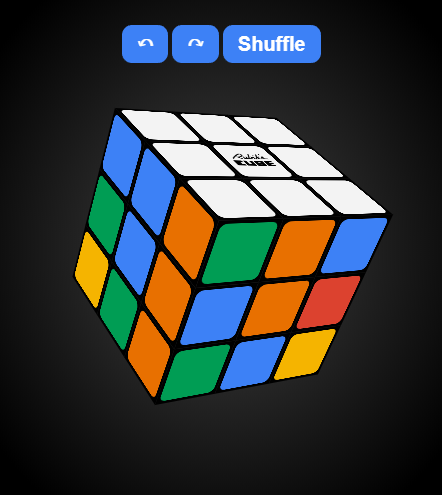
Edge pieces mismatched. (Ruwix.com)
If the White Sticker Is on Top, but the Top Layer Isn’t All the Same Colors
| Algorithm | Explanation |
| L D Li Ri Di R | Rotate the left face clockwise.Rotate the down face clockwise.Rotate the left face counterclockwise.Rotate the right face counterclockwise.Rotate the down face counterclockwise.Rotate the right face clockwise. |
Whatever position the white cube is in now, repeat with the appropriate algorithm from above until the colors match up. There should be three of the same color on the top layer and one in the center of the second layer.
Step 3: Solve Middle Layer
At this point, the white face should be completed, and each other face, except the face opposite the white face, should have three blocks of the same color in the top layer and one block also of that color in the center of the face.
Using the location of the top layer middle piece, we will now rotate the cubes until we get the bottom two layers to all be the same color.
To begin solving the middle layer, rotate your cube until the completed white face is on the bottom. Don’t worry about messing it up because you’re not looking at it—as long as you follow the algorithms, everything will go back into position.
The goal of this stage is to get the colored edge pieces into their correct place on each face. There are three algorithms you can use to accomplish this. Find which one suits your needs and you should have this section solved in no time.
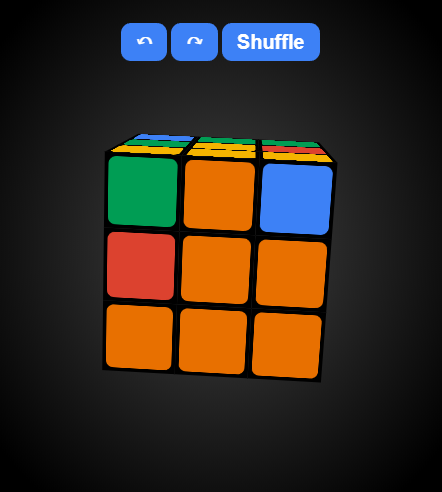 Top layer, center cube needs to go to second layer left. (Ruwix.com)
Top layer, center cube needs to go to second layer left. (Ruwix.com)
If You Need the Center Top Piece to Go to the Second Layer Left
| Algorithm | Explanation |
| Ui Li U L U F Ui Fi | Rotate the up face counterclockwise.Rotate the left face counterclockwise.Rotate the up face clockwise.Rotate the left face clockwise.Rotate the up face clockwise.Rotate the front face clockwise.Rotate the up face counterclockwise.Rotate the front face counterclockwise. |
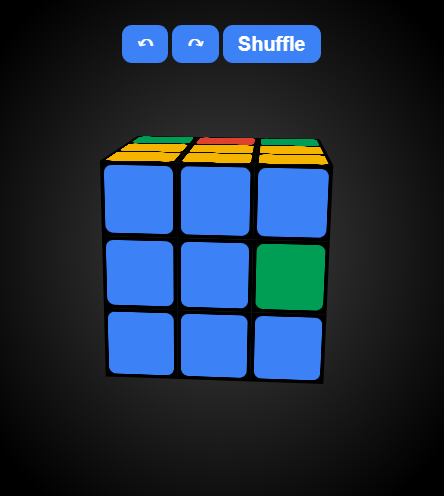 Top layer, center cube needs to go to second layer right. (Ruwix.com)
Top layer, center cube needs to go to second layer right. (Ruwix.com)
If You Need the Center Top Piece to Go to the Second Layer Right
| Algorithm | Explanation |
| U R Ui Ri Ui Fi U F | Rotate the up face clockwise.Rotate the right face clockwise.Rotate the up face counterclockwise.Rotate the right face counterclockwise.Rotate the up face counterclockwise.Rotate the front face counterclockwise.Rotate the up face clockwise.Rotate the front face clockwise. |
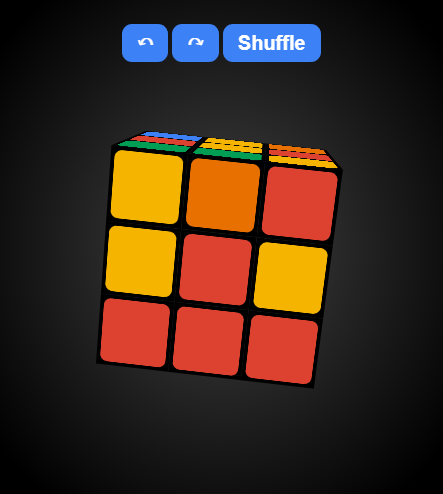 Top layer cube is not in the proper position. (Ruwix.com)
Top layer cube is not in the proper position. (Ruwix.com)
If an Edge Piece Is Not in the Top Layer or It’s Oriented Wrong
| Algorithm | Explanation |
| U R Ui Ri Ui Fi U F U2 U R Ui Ri Ui Fi U F | Rotate the up face clockwise.Rotate the right face clockwise.Rotate the up face counterclockwise.Rotate the right face counterclockwise.Rotate the up face counterclockwise.Rotate the front face counterclockwise.Rotate the up face clockwise.Rotate the front face clockwise.Rotate the up face clockwise two times.Rotate the up face clockwise. Rotate the right face clockwise.Rotate the up face counterclockwise.Rotate the right face counterclockwise.Rotate the up face counterclockwise.Rotate the front face counterclockwise.Rotate the up face clockwise.Rotate the front face clockwise. |
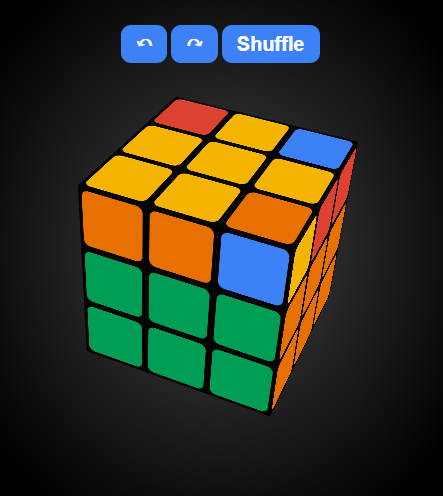 Yellow cross. (Ruwix.com)
Yellow cross. (Ruwix.com)
Step 4: Create Yellow Cross
This step is just like the white cross, but there are a lot more pieces to think about since you’ve already solved a great deal of the puzzle. At this stage, don’t worry if the edge pieces don’t match the face color. We’ll work on that later.
There are three different patterns you might see on your cube. Look at the top face and consider only the shape of the yellow cross—ignore the edge pieces for now. You might see one single yellow dot in the center, you might see an L shape, or you might see a line.
Once you figure out your correct arrangement, run through the following algorithm as many times as specified below.
| Algorithm | Explanation |
| F R U Ri Ui Fi | Rotate the front face clockwise.Rotate the right face clockwise.Rotate the up face clockwise.Rotate the right face counterclockwise.Rotate the up face counterclockwise.Rotate the front face counterclockwise. |
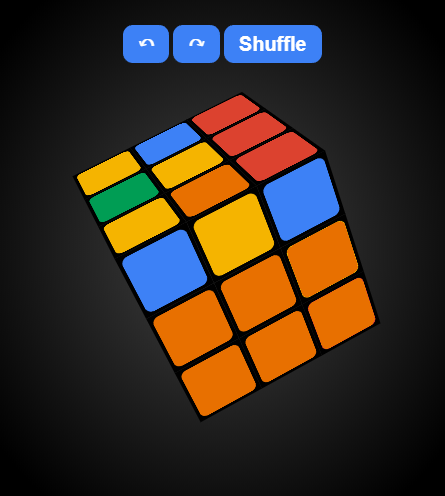 Yellow center dot. (Ruwix.com)
Yellow center dot. (Ruwix.com)
If You Have A Single Yellow Dot
Execute the algorithm three times.
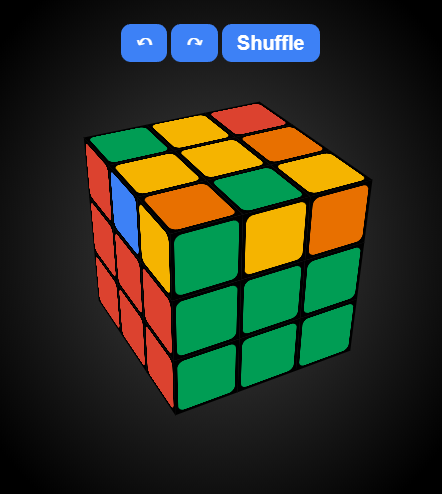 Yellow “L” shape. Note the orientation, with the legs encasing the top left edge. (Ruwix.com)
Yellow “L” shape. Note the orientation, with the legs encasing the top left edge. (Ruwix.com)
If You Have an L Shape
Rotate your entire cube until the legs of the L shape encase the edge piece in the top left. Execute algorithm two times.
Yellow line formation. (Ruwix.com)
If You Have a Line
Rotate your entire cube until the line is horizontal. Execute the algorithm once.
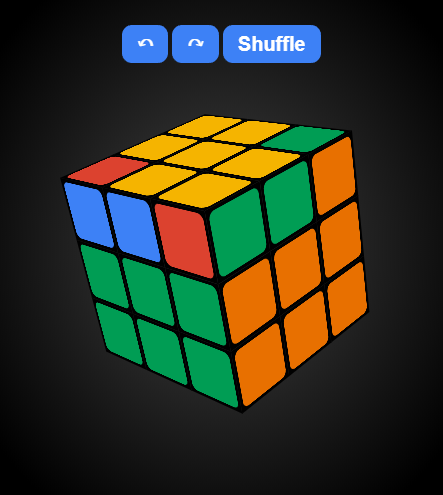 The yellow cross has been completed, but the edge pieces aren’t in the right position. (Ruwix.com)
The yellow cross has been completed, but the edge pieces aren’t in the right position. (Ruwix.com)
Step 5: Swap Yellow Edges in Top Layer
Now it’s time to make sure the yellow cross is oriented correctly so that the color of the center cube of the top layer matches the face it’s on. We’ll be using an algorithm that will switch the front-top and left-top edges.
Rotate your top layer until you find two edges that need to be swapped with each other. If you can’t find two edges from different faces located on the next face over, you can run through the algorithm twice.
| Algorithm | Explanation |
| R U Ri U R U2 Ri U | Rotate the right face clockwise.Rotate the up face clockwise.Rotate the right face counterclockwise.Rotate the up face clockwise.Rotate the right face clockwise.Rotate the up face clockwise two times.Rotate the right face counterclockwise.Rotate the up face clockwise. |
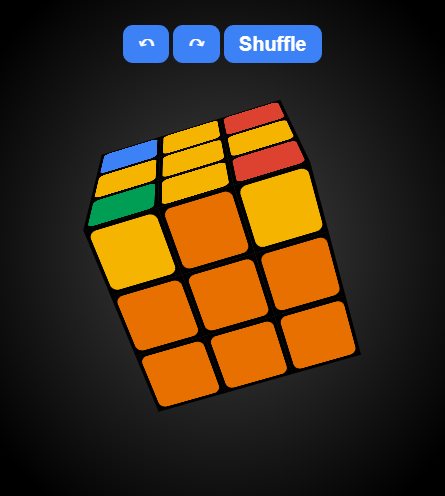 Yellow corners need to be positioned properly so they can go into their correct spots. (Ruwix.com)
Yellow corners need to be positioned properly so they can go into their correct spots. (Ruwix.com)
Step 6: Position Yellow Corners
Let’s get those remaining yellow corners where they belong. Right now, they just need to go into the correct spots—it doesn’t matter if the orientation is wrong.
First, look for a yellow corner that is in the right position, even if it isn’t yet on the top face. Rotate the entire cube in your hands until the correctly positioned yellow cube is in the front-right-top position. Then, cycle through the algorithm below until the other three corners are in the correct position.
If you can’t find a yellow cube in the right spot, keep repeating the algorithm on a random corner until you get it in the correct spot.
| Algorithm | Explanation |
| U R Ui Li U Ri Ui L | Rotate the up face clockwise.Rotate the right face clockwise.Rotate the up face counterclockwise.Rotate the left face counterclockwise.Rotate the up face clockwise.Rotate the up right face counterclockwise.Rotate the up face counterclockwise.Rotate the left face clockwise. |
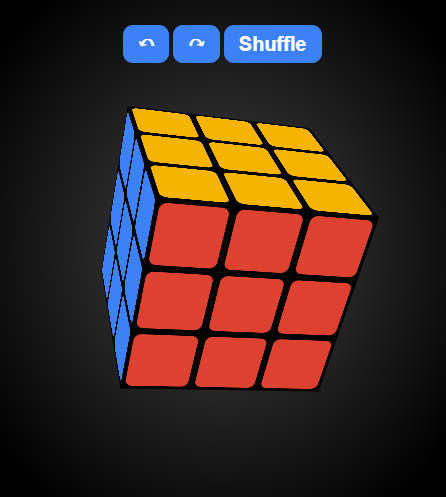 A finished cube. (Ruwix.com)
A finished cube. (Ruwix.com)
Step 7: Solve Final Layer Corners
We’re in the home stretch! Now that our yellow cubes are positioned, we need to properly orient the corners.
Hold your cube with the upper piece you want to orient in the front-right-top corner. Run through the below algorithm until that piece is in its correct position. Once that one is properly oriented, repeat the process until the next piece is in position, and so on, until the cube is solved.
Don’t panic if it starts to look as though you’ve messed the whole cube up. It will go back to normal once you’ve finished getting all the yellow corners into place. Don’t skip any turns, even if it looks like you’re done, as this can mess things up!
You can rotate the top layer between complete repetitions of the algorithm to put cubes in place.
| Algorithm | Explanation |
| Ri Di R D | Rotate the right face counterclockwise.Rotate the down face counterclockwise.Rotate the right face clockwise.Rotate the down face clockwise. |

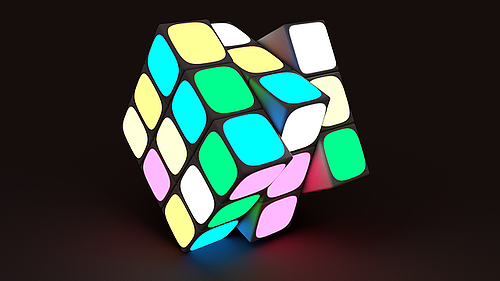
How to Solve a Rubik’s Cube for Beginners: 3 Key Tips
Learning to solve the Rubik’s cube is no small feat! Even the beginner’s method can be tricky to execute well, so here are some quick tips to help you master the cube.
#1: Practice, Practice, Practice
Solving a Rubik’s cube is hard. There’s no simple method—the beginner’s method is still a long and detailed process that requires learning new vocabulary and following steps that might be unfamiliar to you.
The only way to get better is to practice, so keep working at it until you can feel your speed increasing as you go. Don’t give up if you feel like you’re not getting anywhere—each repetition brings you closer to memorization!
#2: Use a Cube Solver If Necessary
Sometimes it can feel as though you get impossibly stuck, but a Rubik’s cube solver can be the answer. If you can follow the steps of a solver to see how to get yourself out of a pickle, you’ll be better prepared next time you run into a similar situation. Don’t be afraid to let someone show you how to do it!
Conclusion
Even if you want to get into speedcubing, start simple: master the beginner’s method before you move on to others, as you’ll need that solid foundation to understand how the cube works and how to move your fingers more efficiently.
Once you’ve done that, you can move on to advanced methods and learn all the little finger tricks that make speedcubing possible.
